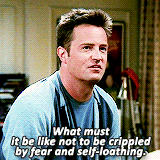Christmas trees may be the most important part of the holiday season. Every year millions of tree, real and fake, are purchased, taken home and decorated. Around 28 million trees will be sold in the United States this year. Many people believe that cutting down so many trees every year is bad for the environment. However, purchasing a fake tree may not be the most sustainable option.
We will start with fake trees. Fake trees contain many chemicals like polyvinyl chloride (PVC). PVC has been known to generate carcinogens, cancer causing agents, during production. Fake trees do not hold up well for a long period of time. You may avoid buying a new tree every year but, these trees don't biodegrade. They can't breakdown and begin to pile up in landfills.
Real Christmas trees aren't great either. Each Christmas tree takes 8-12 years to grow. There are obviously Christmas tree farms dedicated only to growing trees. However, farming still requires a large amount of water and pesticides which has an impact on the environment. At least real trees give back to the environment in ways fake trees can't.
The real trees provide several eco-services while they grow. The trees remove carbon dioxide from the atmosphere. Fake Christmas trees contribute to carbon emissions when produced. The real trees are biodegradable and will not stack up in landfills. They serve as a home to wildlife, promoting biodiversity around the world. Almost all real trees are harvested on farms which creates an extremely sustainable industry.
So what is the greenest option for your family this holiday season? I would advise buying a real tree from a local farm. After Christmas there are multiple ways in which families can recycle their tree. Many communities have a tree drop off or, you can cut it down and put it in your yard waste container for pick up. You can also buy a tree from a local farm with the roots intact and replant it in your yard after Christmas.










































